The Controversial Gravesite of Sacajawea
Memorial | Cemetary | Open to the public
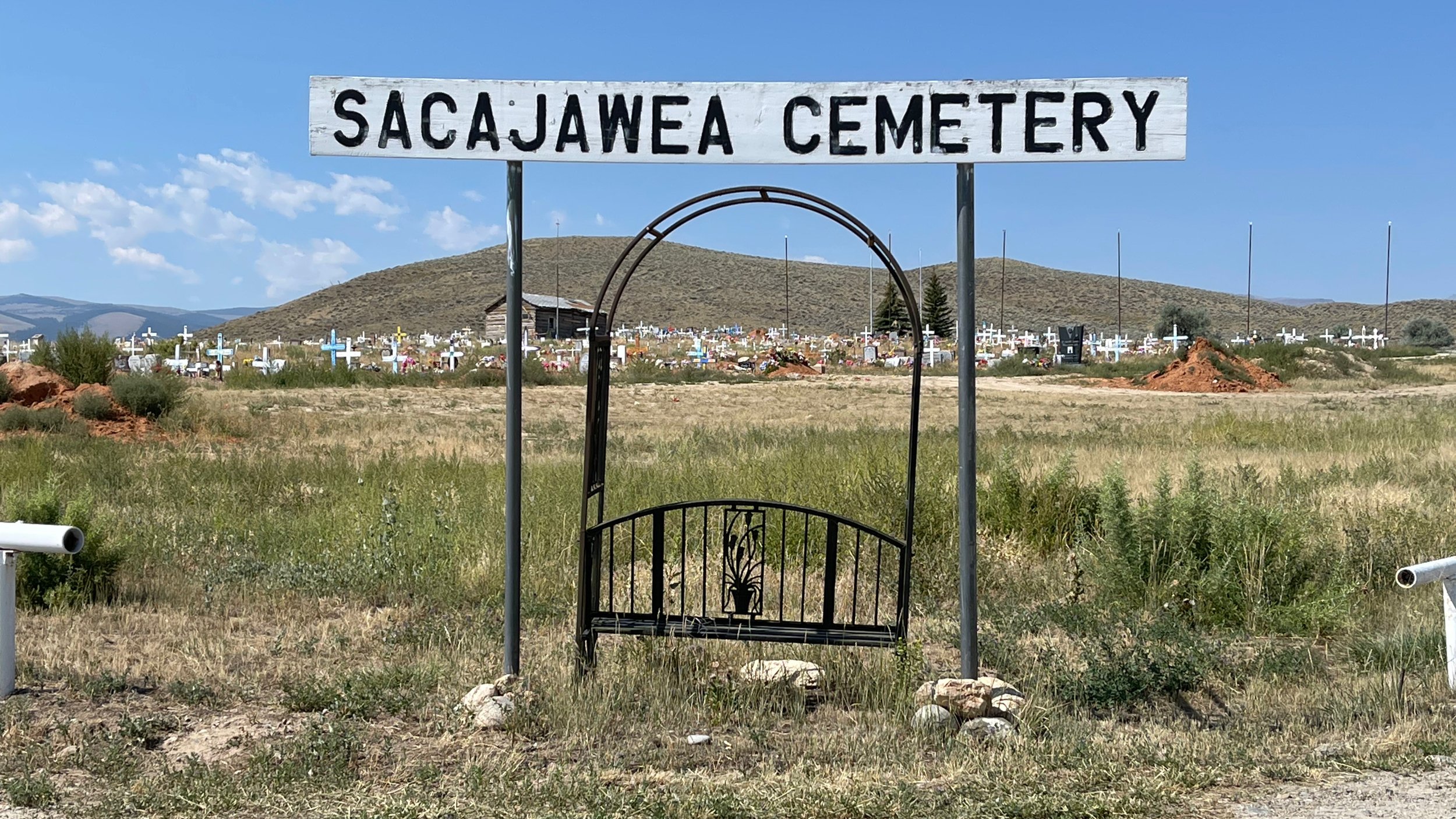
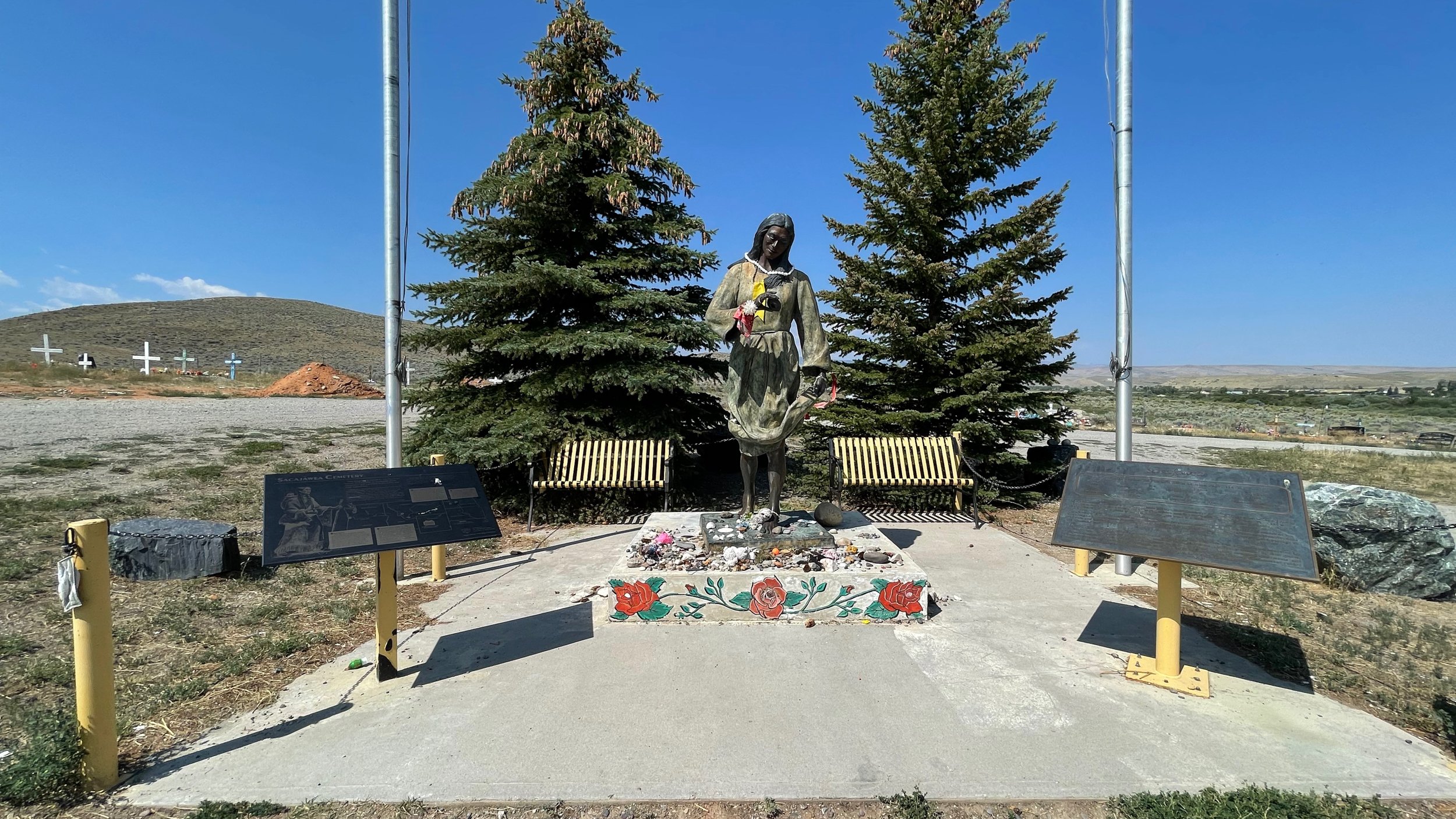
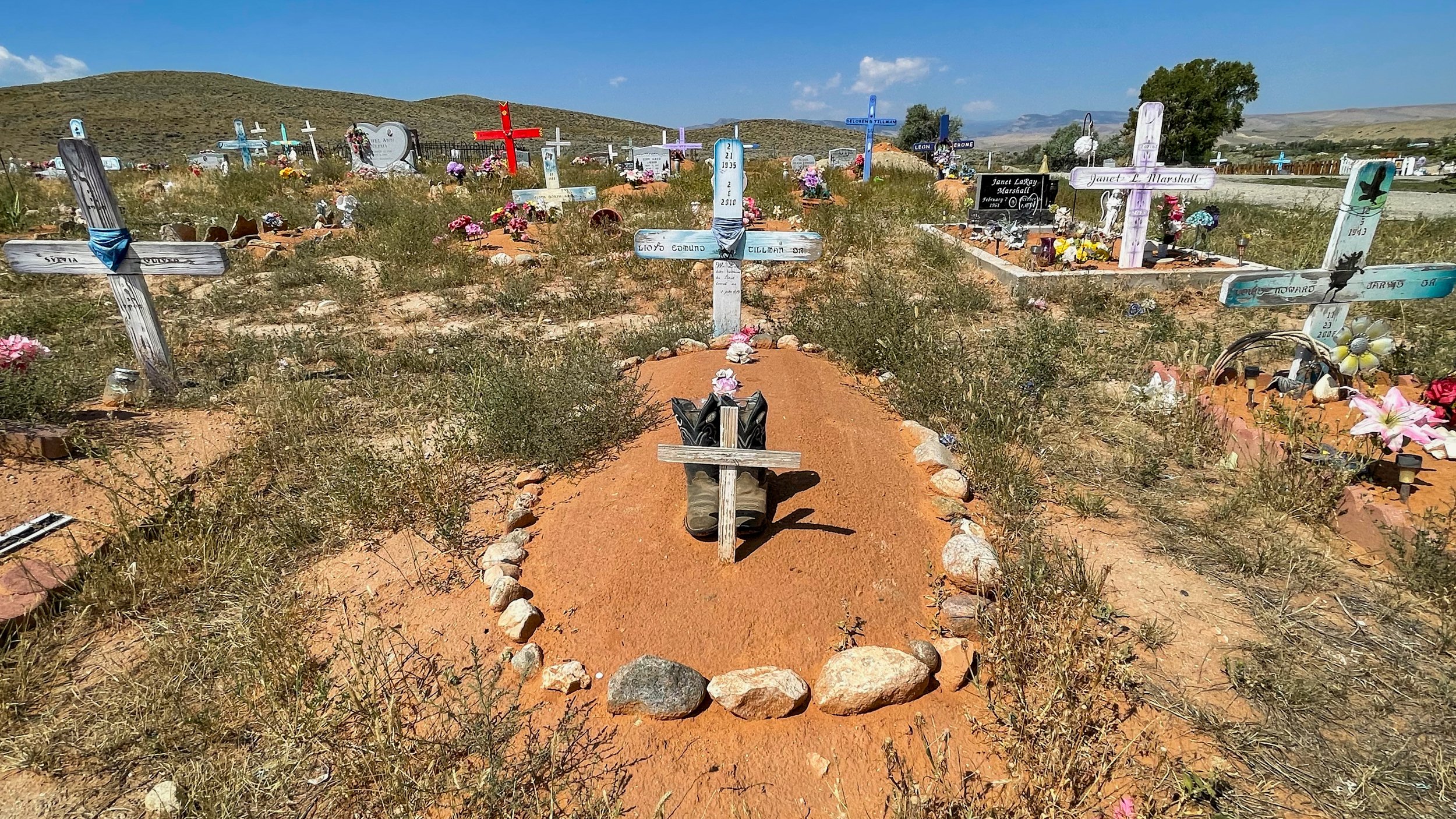
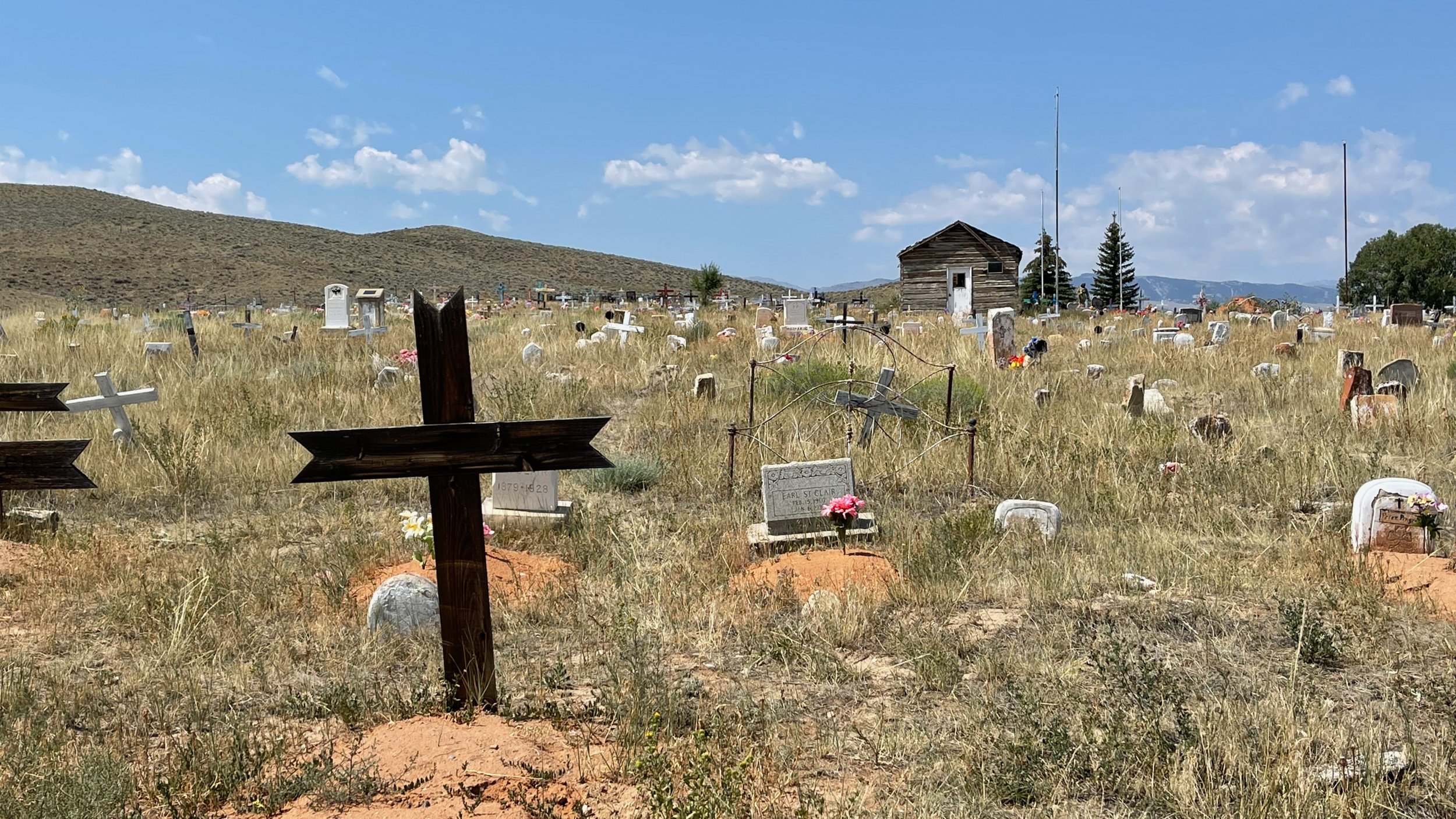
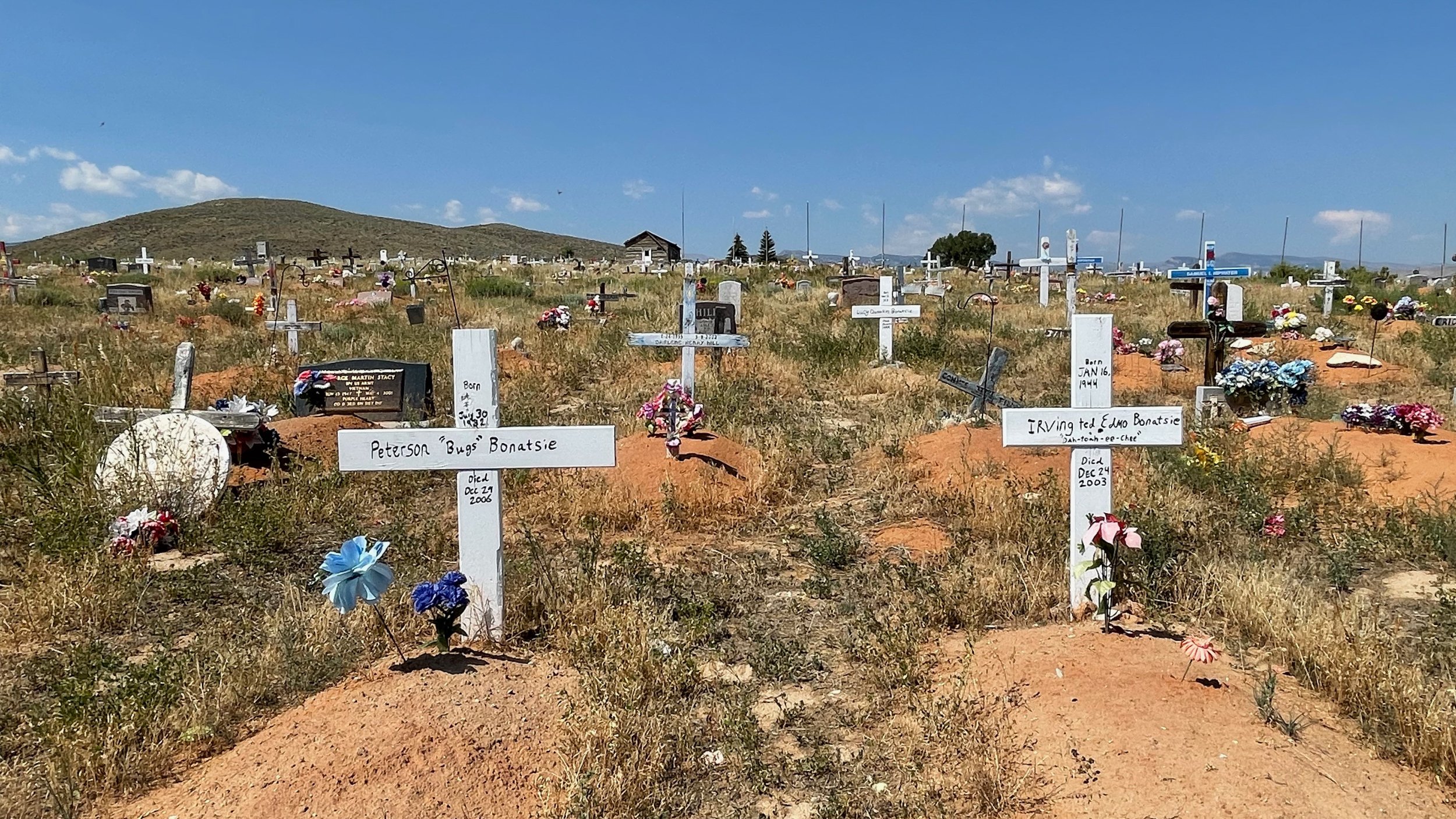
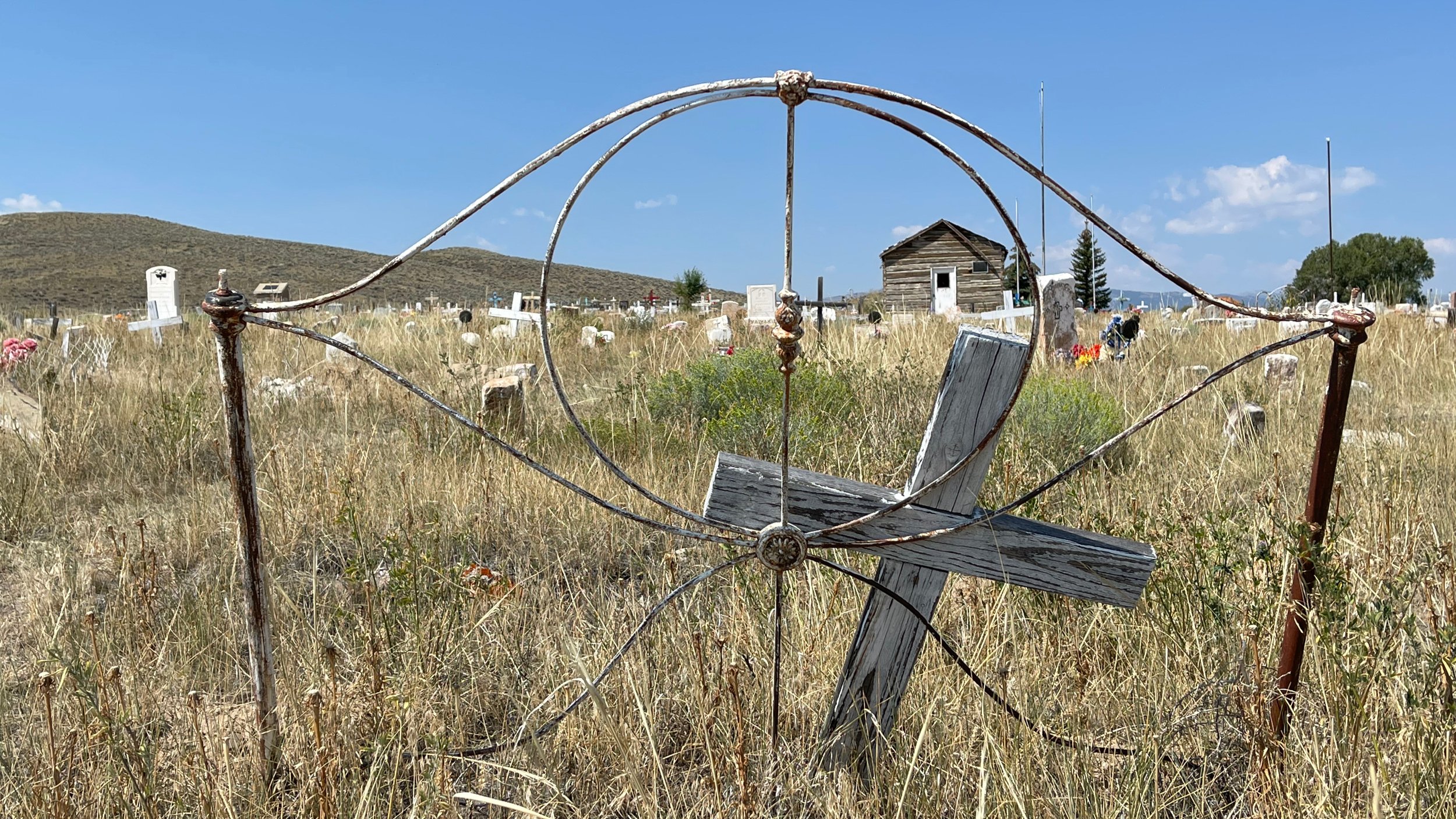
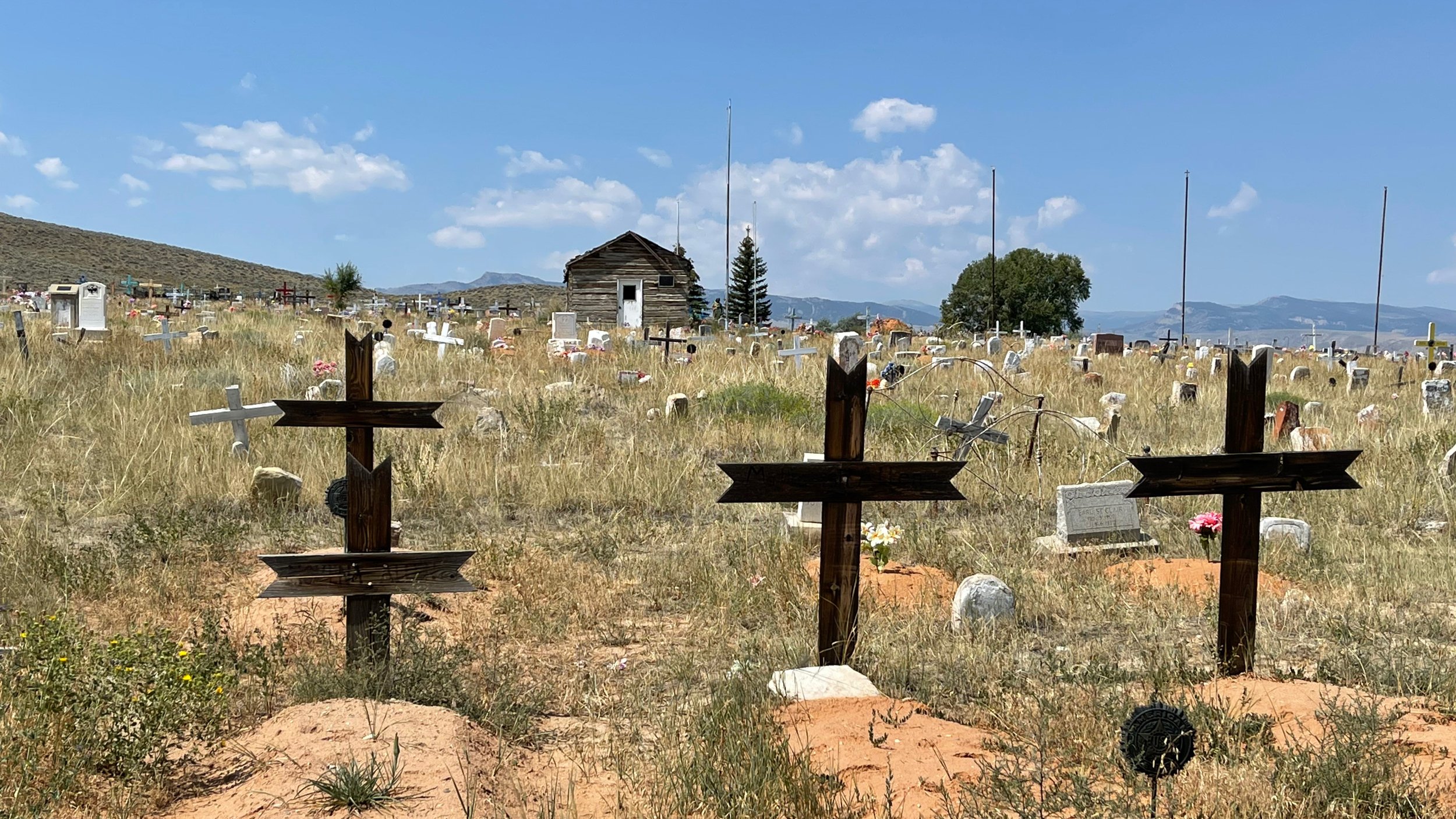
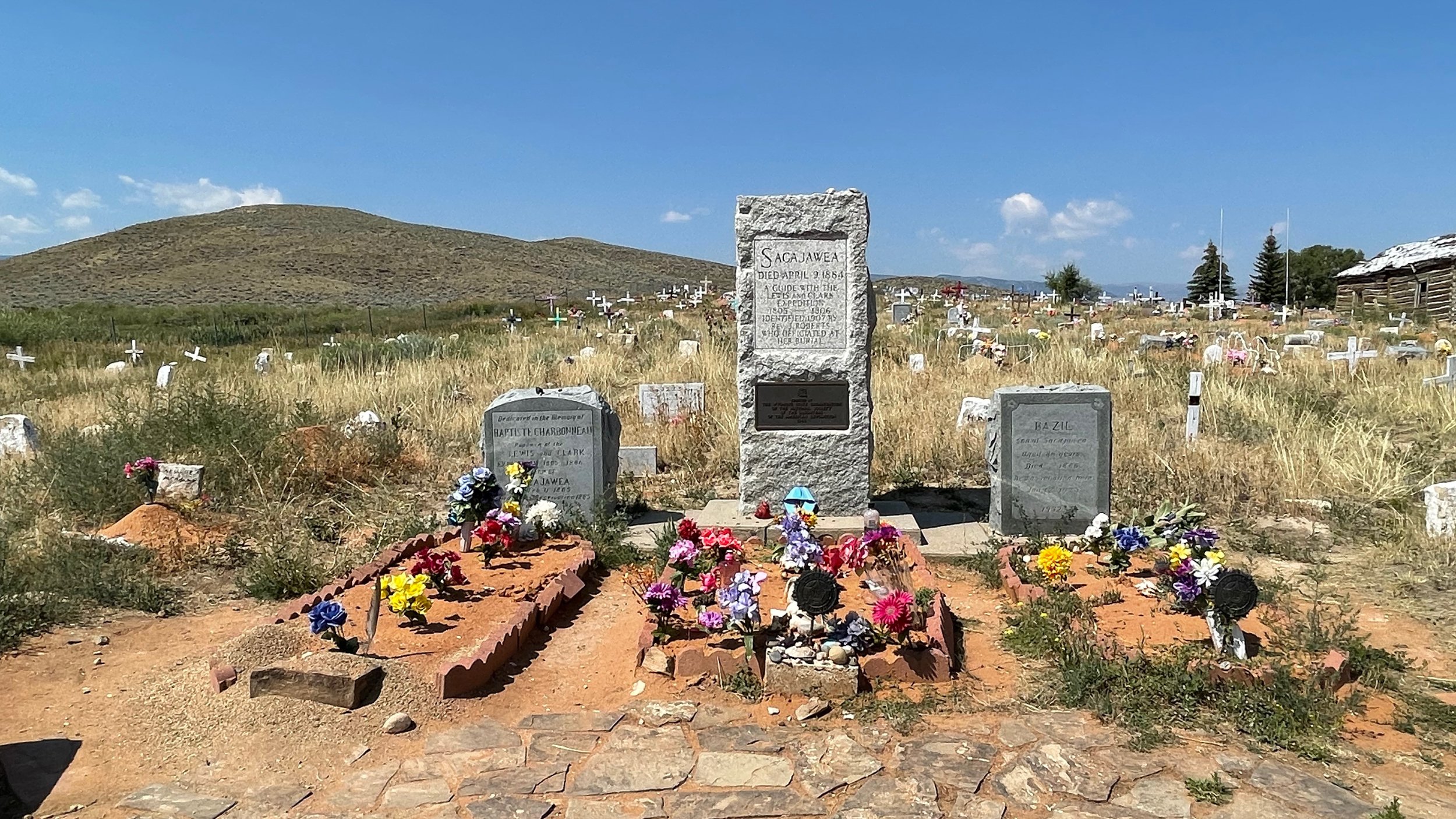
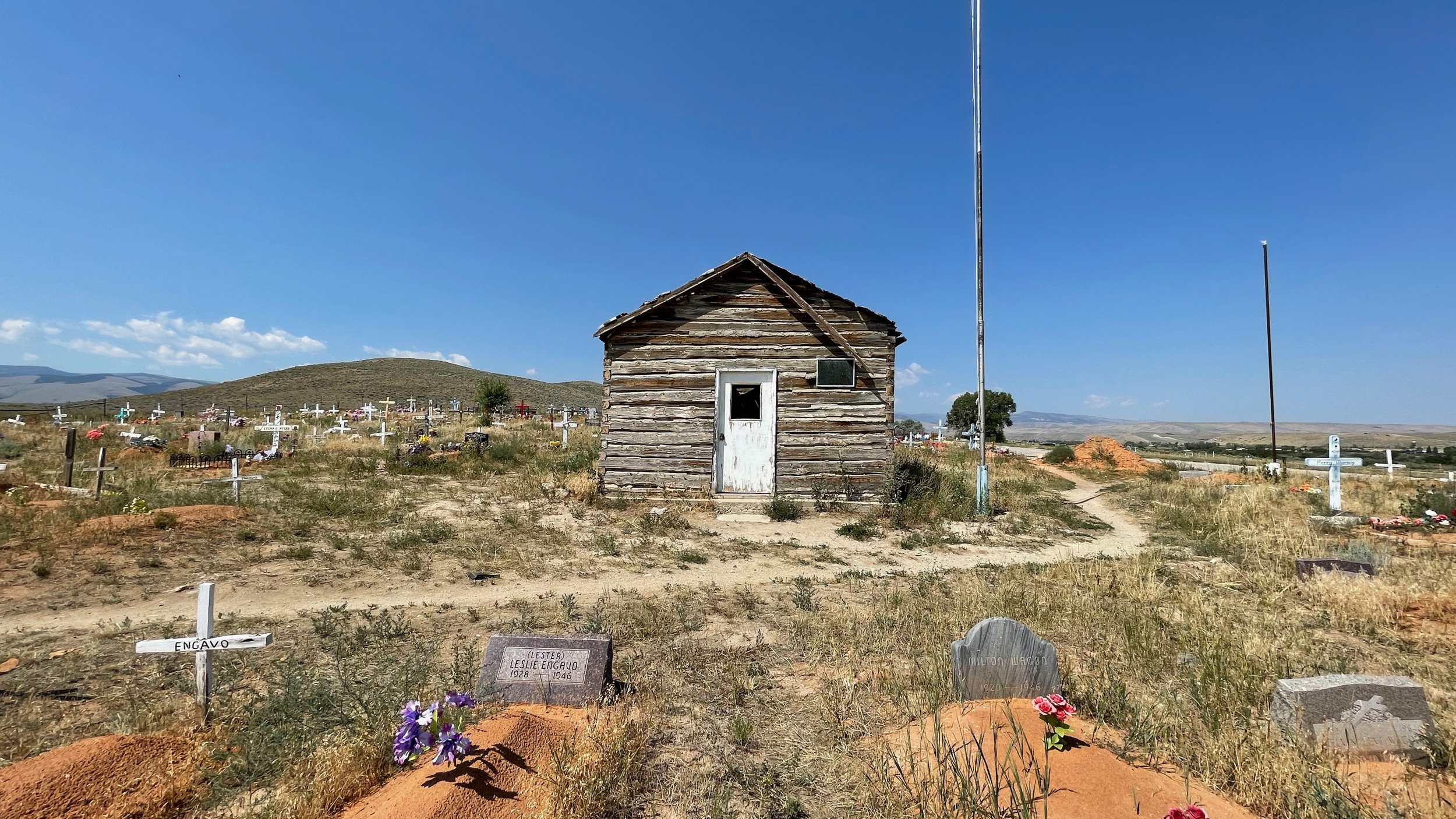
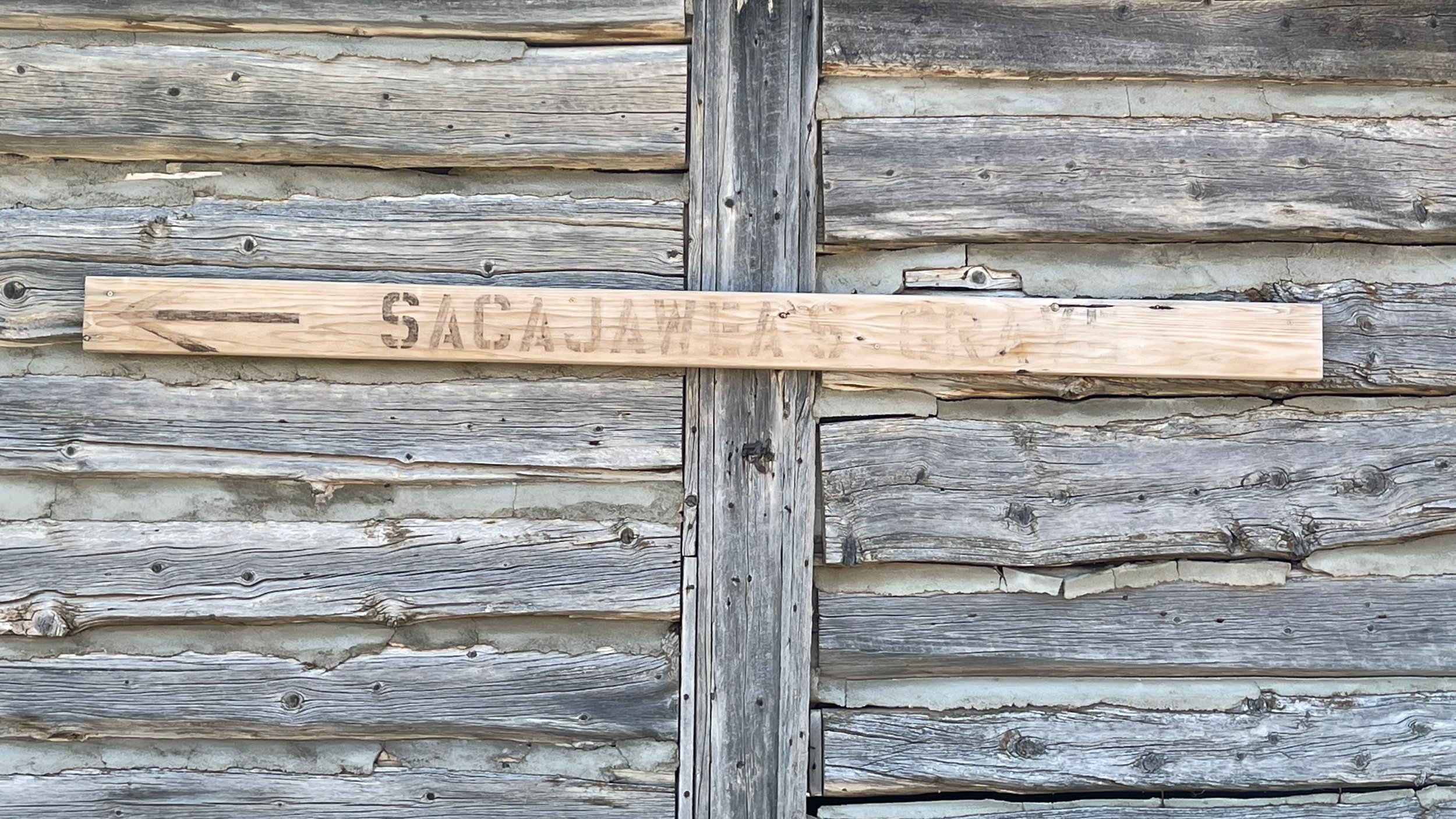
This extraordinary woman’s final resting place is peaceful and colorful. Sacajawea’s grave is hidden away in a small cemetery off an unmarked road 3-hours south of Yellowstone National Park in Wyoming. The loudest sounds are the birds chirping and wind rustling flowers and mementos left to honor loved ones. You can’t help but feel the great respect her people have for Sacajawea in this peaceful place, without show or profit or pomp.
In 1804, Lewis and Clark chose Sacajawea as an interpreter for their famous expedition. A Native American Lemhi Shoshone, 19 year-old Sacajawea accompanied the explorers through from what is now North Dakota, thousand of miles, to the Pacific Ocean. She was part of the expedition for two years during which time she mothered her new born son, Jean Baptiste.
During her early life, the legend says that Sacajawea was captured from her Idaho home and taken to North Dakota. At 13-14, she was sold into marriage (or was won in a gambling game) to a Quebec trapper. Perhaps it is this tragic beginning that gave the her language skills that Lewis and Clark found invaluable.
From the plaque at the memorial sculpture:
Gloria Wadzinski
Burial Register on File at Roberts Mission Pages 114-115
Day: 1884, Date: April 9, No. 10, Names: Bazil’s Mother (Shoshone), Age: BCC 100
Residence: Shoshone Agency, Cause of Death: Old Age, Place of Burial: Burial Ground Shoshone Agency, Signature of Clergyman: J. Roberts
This sculpture represents a truly remarkable young Lemhi Shoshone woman who has just made a journey of 3000 miles with the Lewis and Clark Expedition and is viewing the Pacific Ocean. The sand dollar is significant, as it was given to Chief Washakie. He wore it with honor in many historical pictures.
Sacajawea, the quiet 16 year-old mother [Clark’s journals calculated her to be 19], became an invaluable member of the Expedition because of her knowledge of the Shoshone homeland they would pass through. One of her most important contributions to Lewis and Clark was to reassure them that they were indeed on the route to the westward passage to the “Great Waters.”
Her life after the Expedition is controversial. Her son, Jean Baptiste was adopted and educated by Captain Clark. Her adopted son, Bazil, remained in the Northern Shoshone areas. In later years, Sacajawea returned to the Shoshone homeland to live near Bazil. Many recorded documents and statements made by descendants, officials at Fort Washakie, and by the Federal Government record her death and burial place at the Sacajawea Cemetery, Fort Washakie, Wyoming in 1884.
Two locations claim to be Sacajawea’s gravesite. One report suggests that Sacajawea died in 1812, from putrid fever, a few years after giving birth to her daughter Lizette. She would have been 24-25 years old. In this time period, Native American women were often identified simply as “wives” and not mentioned by name. The record shows that the wife of Charbonneau, a Snake Squaw, died leaving an infant girl. There is no mention of Sacajawea’s name. There also was no mention of the daughter Lizette after this record.
In contradiction, a Shoshone oral tradition relates that Sacajawea left her husband, Charbonneau, married a Comanche, and later in life returned to her home in Wyoming where she died in 1884 at the age of 100.
Research has been done, and books have been written supporting both versions of history. The Shoshone we spoke with on our trip to the cemetery were confident that Sacajawea was here, back home in Wyoming. The old woman who returned to Wind River would not have lied about her identity. It was not in her culture to do so.
The cemetery location of Sacajawea’s grave is remote with no signs marking the way. On South Fork Road, you pass by a similar cemetery, but keep going down the road and take a left where you will see a simple wooden sign, “SACAJAWEA CEMETERY.” (See photo above.) Sacajawea’s gravesite is in the center of the cemetery and the bronze statue memorial is towards the back.
From the marker:
The Right Rev. George Maxwell Rand, Bishop of Colorado, Wyoming and New Mexico ... held his last service in this building on its former site at Wind River on August 19, 1873 when he baptised eleven Shoshone Indians including four grandchildren of Sacajawea.
This chapel originally built by the government as a mission house for the Shoshones and used for many years as a scholl and house of worship, was moved to this place in March 1916. (from the plaque)
Credit: Yellowstone National Park Tips https://www.yellowstonepark.com/things-to-do/attractions/sacajawea-secret-gravesite/
Cemetery Lane
Fort Washakie, WY